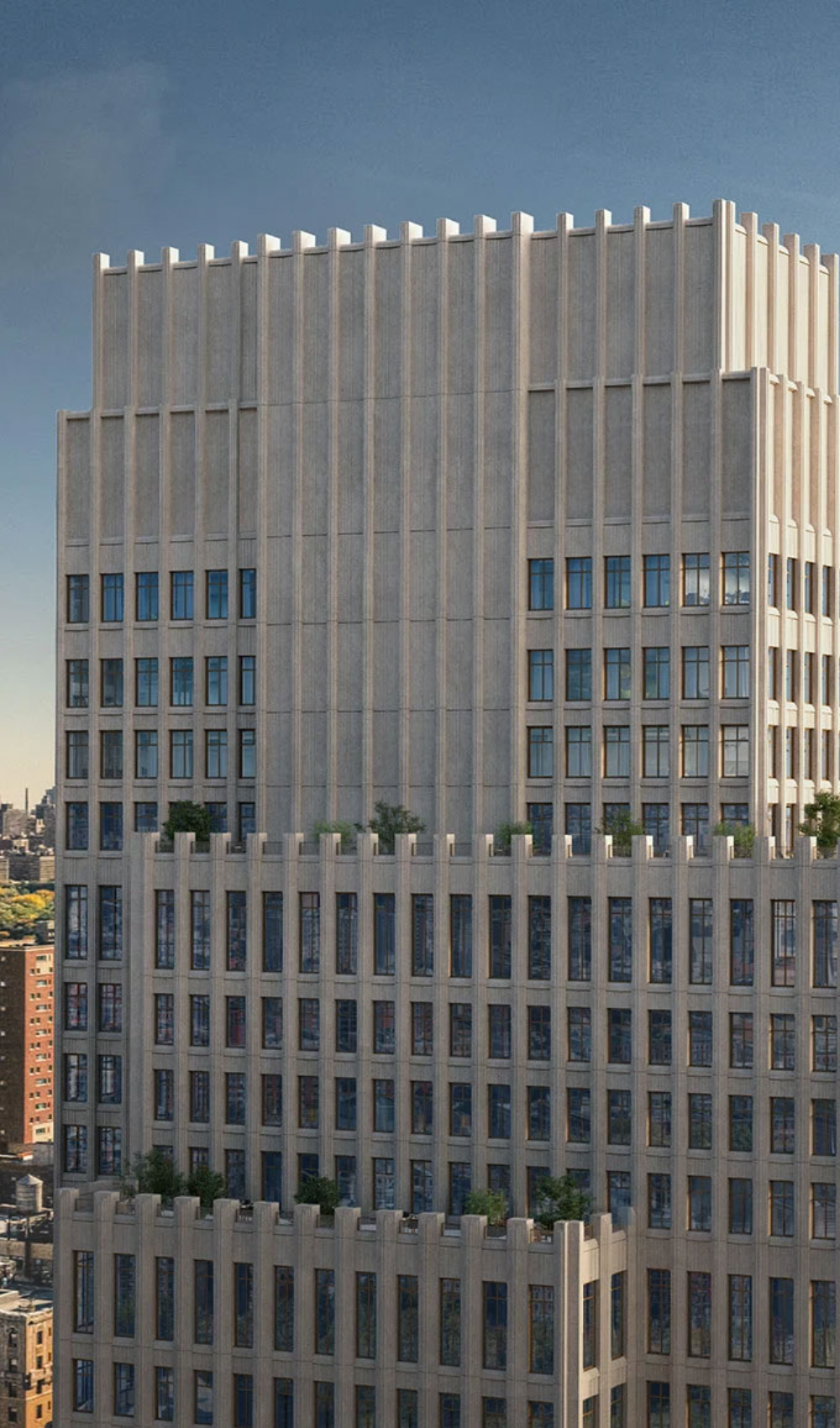
VANDEWATER
Location – New York, New York
Size – 316,000sf
Developer – Savanna Fund
Architect – Fogarty Finger Architects, INC Architects
Market – Residential Condominium
Date – 2022
Project
A new construction luxury residential condominium in Morningside Heights sought
LEED NC v2009 certification. Throughout the design and construction process,
Vandewater established sustainability targets for site, energy, water, waste,
and indoor air quality.
Services
Sustainable Design
LEED NC v2009 Certification
LEED + NYCECC Energy Modeling
Fundamental + Enhanced Commissioning
Achievements
LEED NC v2009 Gold Certification
Energy
Energy efficiency measures that optimize the energy performance of the building
include a high-efficiency HVAC system and high-performance glazing. Glass
fenestration enables high daylight penetration into spaces with views to the
exterior. Green Power off-sets also improve the building’s performance. Building
commissioning and energy and water metering maximize and monitor energy
performance. Occupancy sensors in common areas help to reduce lighting impacts.
Water
Vandewater maximizes water efficiency to reduce the burden on municipal water
supply and wastewater systems, while reducing the overall operating costs. All building fixtures have low flush and flow rates resulting in a 38% reduction in potable water use. Native vegetation across the site and efficient irrigation practices helps to reduce the amount of water necessary to maintain the landscaping.
Indoor Air Quality
To improve indoor air quality, the mechanical ventilation system has been designed
to beat the outdoor air supply requirements of ASHRAE 62.1-2010 – Ventilation for
Acceptable Indoor Air Quality, by at least 30%. Additionally, smoking is prohibited
within the public areas of the building and site. Vandewater was designed to meet the
voluntary thermal comfort criteria described in the ASHRAE 55-2010 standard provides
occupant controllability of the mechanical systems to ensure comfort. Enhanced
indoor air quality is achieved by incorporating materials that meet all advanced
emissions criteria.
Materials
The team sought to effectively manage materials and resources. Examples range
from basics, like recycling to more complex issues like the use of building materials
containing recycled content from manufacturers with sustainable extraction/
fabrication policies. Adhesives, sealants, paints and coatings all have
low VOC content. The building recycles tenant waste material and incorporates a
designated recycling area. A “Green Cleaning” program requires the use of non-toxic
and environmentally benign cleaning chemicals.
